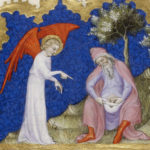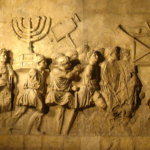Judaism is one of the most widely practiced religions worldwide. With roots that extend far beyond Catholic and Christian decrees, historically, Judaism has been known to be based primarily on Old Testament teachings. Throughout the course of time, however, different branches of Judaism have spawned in order to incorporate contemporary views and advanced modern thought.
Orthodox Judaism
Orthodox Judaism, as its name implies, encompasses the traditional views and practices of the Jewish people. Disciples of this branch of Judaism must adhere to strict religious codes and decrees, particularly those outlined in the most important Jewish historical and religious document, the Talmud. Orthodox Jews are required to follow Jewish Kosher dietary laws that include the complete and total exemption of pork and shellfish from their diets and also bars the mixing of meat and dairy. For Orthodox Jews, Passover Seders are often taken very seriously and executed in a meticulous manner, cautious not to be blasphemous toward God, and gender roles remain clearly defined as men and women are both required to maintain to strict dress codes.
Liberal Judaism
On the opposite end of the spectrum, a Liberal Judaism movement has flourished in recent years with the evolution of social and scientific thought. Many Liberal Jews have forsaken traditional views for more contemporary alternatives, including many of the notions of modern feminist Jewish movements. Passover Seders for liberal Jewish people are also generally laxer in terms of dietary laws and do not follow a regimented structure as Orthodox Jews often do.
Conservative Judaism
Finally, conservative Jewish people have established themselves somewhere in between the two polar opposites of Orthodox and Liberal Judaism, deviating somewhat from the traditions of earlier Orthodox generations. Passover Seders among conservative Jews are typically considered somewhere between the two Orthodox and Reformed extremes.
 Although these conservative followers adhere to what they believe are the most important core values and teachings of Judaism, they are often more flexible with certain regulations and often allow younger members of their family to occasionally deviate from “standard” Jewish practice.
Although these conservative followers adhere to what they believe are the most important core values and teachings of Judaism, they are often more flexible with certain regulations and often allow younger members of their family to occasionally deviate from “standard” Jewish practice.
Today, there are hundreds, if not thousands, of these branches which vary slightly (on in some cases greatly) from one another. Nevertheless, three broad labels have been used to describe these smaller communities of Jewish individuals and the fundamental basis of their views. When examining the variations in the practice of Passover Seders by members of these three varying temples, a non-Jewish person can clearly see the vast differences in these similar religious sects.






